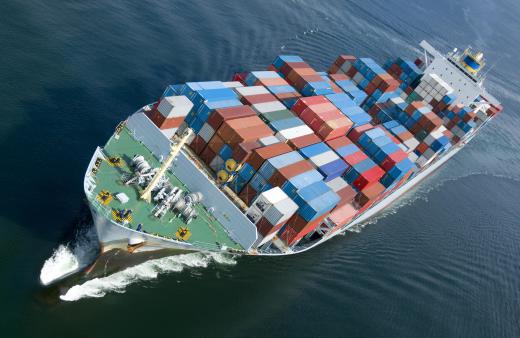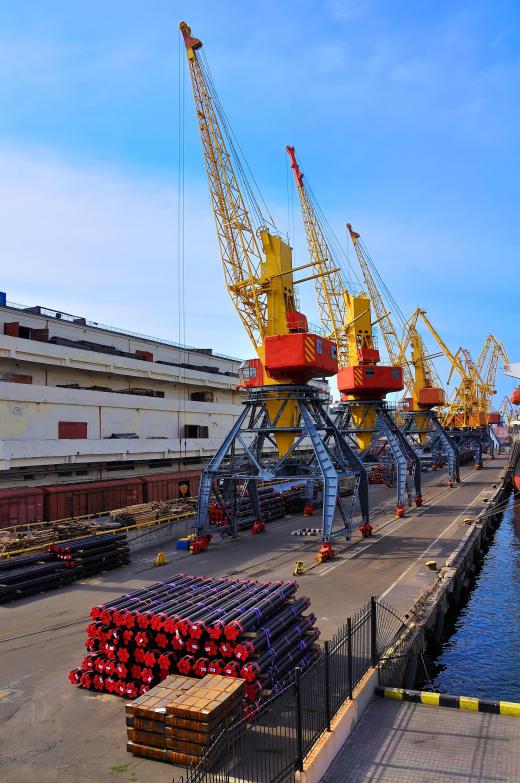When shipping heavy equipment, careful planning I can be essential to protect the equipment and meet regulatory requirements. Heavy equipment usually requires special road permits if the dimensions or weights exceed specific limits set by government agencies. The equipment owner may also need supplemental insurance to provide coverage in the event of damage or loss to the equipment.
Heavy equipment may have wheels for transport, such as heavy trucks or motorized cranes. These machines can sometimes be driven on and off a transport truck, ship, or train for delivery to another location. This is called roll-on, roll-off (RORO) operations, and can reduce shipping costs because the equipment may not require a special container. RORO ships must deliver to ports that have docks suitable for drive-off operations, which may limit usefulness as a shipping option.

Some equipment may be heavy, but can fit inside rectangular shipping containers, allowing them to be loaded on container ships or trucks. Shipping heavy equipment by container requires careful understanding of the equipment weight, dimensions, and having equipment to load and unload from the container. This type of shipping may be useful for heavy pumps, compressors or machine parts that might be damaged by open shipping.

Equipment owners should contact a licensed, bonded shipping company prior to shipping heavy equipment. Part of the trip may involve transport on public roads, and heavy or oversized equipment usually requires road permits. Careful route planning may be needed for oversized transport due to bridge or utility line clearances, which can be determined by the shipping company.
The owner should determine what pre-trip preparation might be needed for the equipment prior to the shipping date. Some equipment may need to be wrapped with a protective cover, and fuel or other fluids may need to be removed. Oversized equipment may require partial disassembly to allow it to be moved where size restrictions are present either on roads or aboard a ship or train.
Another consideration for shipping heavy equipment is asset protection, or insurance, considerations. Some equipment insurance may not cover damage or loss during transportation, and shipping companies may have limits of insurance coverage for any damage they cause. Owners should carefully research their insurance coverage for equipment they plan to ship, and determine if supplemental insurance is needed to cover damage or replacement.
Environmental damage can be a major consideration when shipping heavy equipment, because parts used on dry land may not be resistant to damage from sea air or saltwater if put on a ship. An owner should discuss protection options with their shipping company, or contact the equipment manufacturer for possible options. Shipping companies are usually not liable for damage to equipment caused by the shipping environment, if the owner has not arranged to cover or protect it.
